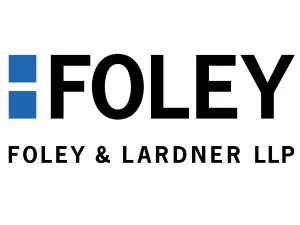Ann Marie Uetz’s articles from Foley & Lardner are most popular:
- in United States
Foley & Lardner are most popular:
- within Government, Public Sector, Insurance and Coronavirus (COVID-19) topic(s)
Analysis by Julie Dautermann, Competitive Intelligence Analyst
This report helps automotive suppliers inform their legal and operational decisions to help address challenges and opportunities. Contact your Foley relationship partner, or Ann Marie Uetz, Vanessa L. Miller, or Nicholas J. Ellis, to follow up.
Key Developments
- Foley & Lardner was among the sponsors of
the
OESA 2022 Automotive Supplier Conference held in Novi, Michigan
on November 7. Stay tuned to Dashboard Insights for key takeaways
from this event.
- The most recent article in Foley &
Lardner's Supply Chain Disruption Series provides
background on a number of key terms and
conditions for buyers and sellers in the supply chain to
consider in commercial forms. Click here to subscribe to the article series.
- LMC Automotive estimates U.S. new
light-vehicle sales reached a SAAR of 15.1 million units in
October, representing an increase of 11% from October
2021, but a decrease of 14% from October 2020. LMC is projecting
full-year 2022 new light-vehicle sales of 13.7 million
units.
- New vehicle prices in October averaged
33% above pre-pandemic levels, and up to five million U.S.
consumers are still waiting to buy new vehicles, according to data
from J.D. Power excerpted in The Wall Street Journal and the Associated Press. The analysis also
indicates consumers can expect "a continued, slight mitigation
on new-vehicle prices." However, rapid price drops are not
anticipated in the near-term.
- Edmunds estimates the average annual percentage
rate on new-car loans reached 6.3% in
October, and in the coming months APRs could reach their highest
levels in over a decade, according to data excerpted in Bloomberg.
- Toyota lowered its full-year production guidance by
500,000 vehicles to 9.2 million vehicles, citing market headwinds
including semiconductor supply shortages.
- Argo AI is reported to be winding down operations after its key backers,
Ford and Volkswagen, indicated
they will cease investing in the autonomous vehicle technology
company. Ford stated it will reduce capital spending on Level 4
advanced driver-assist systems to prioritize the internal
development of L2+/L3 technologies.
- Ford reported a third-quarter profit loss of $827
million, which was attributed to a $2.7 billion non-cash pretax
impairment on its investment in Argo AI. Revenue
was up 10% year over year to $39 billion, but the quarter was
impacted by approximately 40,000 vehicles awaiting
parts, as well as $1 billion in
higher-than-expected supplier payments.
- Electric vehicles and low emissions
technology:
-
- Government officials from the EU, South Korea and Japan
continue to express concerns over the implications of
automotive sourcing requirements applying to EV tax
credits in the U.S. Inflation Reduction
Act.
- Bloomberg reports automakers
including Ford have asked the U.S. Department of
Treasury for clarity and flexibility regarding certain
provisions affecting EV tax credit
eligibility.
- A report in Supply Chain Dive addresses a number
of the challenges in establishing a U.S.-based supply chain
for EV batteries, including limited domestic reserves of
key raw materials such as lithium. For additional context on this
topic, a recent article in Foley &
Lardner's Supply Chain Disruption Series provides an
overview of current issues affecting the production and supply of
lithium-ion batteries.
- A new report from S&P Global Mobility assesses risk factors
which could impact the supply chain for
battery raw materials, including geopolitical
tensions, ESG concerns and high commodity prices. [Press
release only, full report not publicly available]
- The European Union reached a provisional agreement which could require all new passenger cars sold in the bloc to be zero-emissions vehicles beginning in 2035.
- Government officials from the EU, South Korea and Japan
continue to express concerns over the implications of
automotive sourcing requirements applying to EV tax
credits in the U.S. Inflation Reduction
Act.
Market Trends and Regulatory
- LMC Automotive estimates the production share of
global automaker brands in China has declined to 47%, from
54% in 2019, due to increasing market penetration by domestic
Chinese brands in the nation.
- Transport Topics reports a number of
industry representatives expressed concerns during a recent public
hearing pertaining to California's proposed
Advanced Clean Fleets Regulation, including the
availability of charging infrastructure, and the impact on vehicle
cost and performance. The state hopes to achieve a zero-emission
truck and bus fleet by 2045.
- Law360 reports a number of states and industry organizations asked the D.C. Circuit to strike down U.S. Environmental Protection Agency regulations which strengthen greenhouse gas standards for auto emissions, arguing the agency has overstepped its authority.
OEMs/Suppliers
- Magna International will invest over $500 million at three sites
in Michigan to support production of battery components and seating
parts.
- Lear announced plans to invest $80 million on a new
manufacturing facility in Michigan after winning a contract to
exclusively supply the battery disconnect unit on all full-size
SUVs and trucks built on GM's Ultium
EV platform through 2030.
- Stellantis reported third-quarter revenue of 42 billion euros, representing an increase of 29%, compared to the same period last year. The automaker indicated its vehicle deliveries rose 13% in the quarter, amid improved supplies of semiconductors.
Connected/Autonomous Vehicles and Mobility Services
- California-based lidar makers Ouster and
Velodyne announced plans to merge, in a transaction
which will result in shareholders owning approximately 50% of the
combined company. The deal is expected to close in the first half
of 2023.
- Bloomberg reports automakers are using lidar more frequently in production vehicles to improve the functionality of advanced driver assistance systems (ADAS). Lidar has thus far been used primarily for highly specialized autonomous vehicles. However, it is expected to receive a broader rollout as prices decline for the technology.
Electric Vehicles and Low Emissions Technology
- Hyundai broke ground on its $5.5 billion electric
vehicle and battery plant in Georgia, and production is expected to
start during 2025.This represents the automaker's first EV
plant in the U.S.
- Panasonic started construction on its new battery plant
in Kansas last week, and production is expected to begin in
2025.
- The Biden Administration announced the Fiscal Year 2022 recipients of
the U.S. EPA's Clean School Bus Program, which
will award nearly $1 billion to 389 school districts across the
nation.
- A report by the Fuels Institute indicates the
expansion of public EV charging infrastructure in
the U.S. could be impeded by inadequate zoning requirements
and permitting processes.
- A report in
Bloomberg assesses a number of ramifications
associated with Buy America requirements for
certain federally-funded EV charging
projects.
- GM and Houston-based
Microvast intend to jointly develop separator technology
for EV batteries, and build a new separator plant in the
U.S. The project will be supported by a $200 million grant funded
by the Bipartisan Infrastructure Law.
- Electric work truck manufacturer VIA Motors moved its headquarters to Auburn Hills, MI, to a site that will act as a hub for the company's vehicle design and testing.
The content of this article is intended to provide a general guide to the subject matter. Specialist advice should be sought about your specific circumstances.




